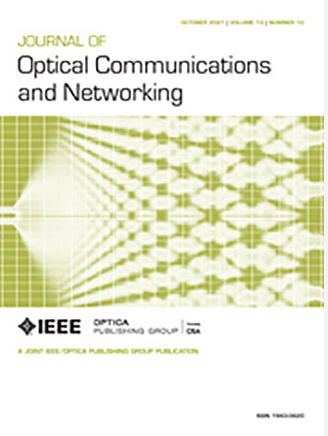基于混沌数字滤波器的异构接入网络物理层安全与数据辅助三层加密
IF 4
2区 计算机科学
Q1 COMPUTER SCIENCE, HARDWARE & ARCHITECTURE
引用次数: 0
摘要
由于对强大网络安全的需求日益增长,未来的通信技术必须将安全性作为强制性的设计特征。然而,现有的物理层安全技术可能过于复杂和昂贵,无法在具有高连接密度的异构访问网络中支持资源受限的设备。为了解决这一挑战,提出了一种采用带有私有安全密钥的混沌数字滤波器(CDFs)的物理层安全技术,并首次在具有25公里标准单模光纤的12 Gbit/s强度调制和直接检测光学系统中进行了实验验证。基于噪声的基于私有安全密钥的CDFs具有依赖于安全密钥的振幅和相位频率响应变化,其排列熵为$\gt 0.99$,从而通过直接扭曲数据信号、诱导数据信号之间的干扰以及通过非法检测加剧干扰来实现数据辅助三级加密。由于cdf是数字集成的,并提供“设计安全”、“设计开放”和“流量级动态安全”的特性,因此所提出的技术促进了开放和可互操作的安全解决方案,并为异构访问网络提供了最大的安全性。本文章由计算机程序翻译,如有差异,请以英文原文为准。
Chaotic digital filter-based physical layer security with data-assisted tri-level encryption for heterogeneous access networks
Due to the increasing demand for robust network cybersecurity, future communication technologies must consider security as a mandatory design feature. However, existing physical layer security techniques can be excessively complex and too expensive to support resource-constrained devices in heterogeneous access networks with high connection densities. To address this challenge, a physical layer security technique employing chaotic digital filters (CDFs) with private security keys is proposed and experimentally validated, for the first time, in a 12 Gbit/s intensity modulation and direct detection optical system with a 25 km standard single-mode fiber. Noise-like private security key-based CDFs have security key-dependent changes in amplitude and phase frequency response, with permutation entropies of $\gt 0.99$ , thus achieving data-assisted tri-level encryption by directly distorting the data signals, inducing interferences between data signals, and also intensifying the interferences via illegal detections. As CDFs are digitally integrable and offer features of “security-by-design,” “openness-by-design,” and “dynamic security at the traffic level,” the proposed technique facilitates an open and interoperable security solution with the utmost security for heterogeneous access networks.
求助全文
通过发布文献求助,成功后即可免费获取论文全文。
去求助
来源期刊
CiteScore
9.40
自引率
16.00%
发文量
104
审稿时长
4 months
期刊介绍:
The scope of the Journal includes advances in the state-of-the-art of optical networking science, technology, and engineering. Both theoretical contributions (including new techniques, concepts, analyses, and economic studies) and practical contributions (including optical networking experiments, prototypes, and new applications) are encouraged. Subareas of interest include the architecture and design of optical networks, optical network survivability and security, software-defined optical networking, elastic optical networks, data and control plane advances, network management related innovation, and optical access networks. Enabling technologies and their applications are suitable topics only if the results are shown to directly impact optical networking beyond simple point-to-point networks.

 求助内容:
求助内容: 应助结果提醒方式:
应助结果提醒方式:


